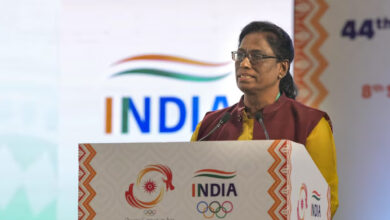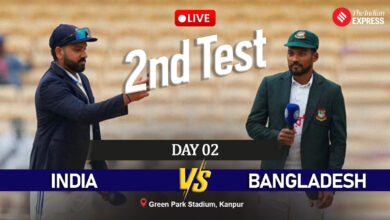Abhijit Kunte on chess eras: From waiting six months for chess books to teenagers who play 10-second blitz games

Abhijit Kunte is a man who has seen eras change. The man who became India’s fourth Grandmaster has tales of fine-tuning his chess from Russian books that arrived via sea and chess lines that would be written or photocopied in files as part of competition prep.Last year, he was part of the coaching set-up for the Indian team at the Chess Olympiad. Currently, he’s the manager for the Balan Alaskan Knights team in the inaugural season of the Global Chess League, which has some big names like Ian Nepomniachtchi and Teimour Radjabov along with promising stars like Raunak Sadhwani and Nodirbek Abdusattorov.He spoke to The Indian Express from Dubai about how things were back in his era. And the new era in sport, that’s been ushered in the GCL. Excerpts:
You’re someone who has seen the growth of Indian chess up close. Back when you became a GM (in 2000) to now, how drastically have things changed?
When I started playing chess, it was not a profession. There were no computers, or cell phones. Travelling itself was a big challenge. Now we’re in a completely different era. I got my first laptop in 2001. I was already a grandmaster then. Machines back then were not so strong. Now the training methodology has changed a lot. Because of the internet, a lot of things have changed.
Abhijit Kunte, who became the fourth grandmaster from India, playing in a tournament in Sangli in 1986. (PHOTO: Abhijit Kunte/Instagram)
Back when we were playing, to get chess books in India, it used to take us six months’ time. that time a new edition of that book would have come in the market because it would be published every four months. And there had been a lot of developments in those months. Those books were only in Russian, and were published in Yugoslavia or America. If we wanted it air mail, it used to cost us $30 or $40. That was a very expensive price for one chess book. So we used to get it sea mail. Getting knowledge was not so easy.
Now, because of the internet, you get data available to everyone at the same time. That got us at par with the other countries. That helped chess in India a lot. Now the economy is doing very well. So that’s helping players to play a lot of tournaments abroad. If you see the GCL, which is happening for the first time, the owners are from India. India is heavily invested in chess. It’s an intellectual sport and it’s easy for Indians to connect with it.
If you were telling these back-in-the-day anecdotes to some of these teenaged GMs from India, how difficult is it for them to understand or relate?
I was in a training camp with the young players before the Chess Olympiad last year. Back in the day, our coaches said playing three-minute blitz games was not good. Then we came to games with one-minute time control each. That was very bad as far as a coach is concerned. These young guys have improvised so much, they play 10-second (per move) games! I was just talking to them trying to understand how they do it. They said, ‘you just need to move fast.’ In this internet era, they do so much stuff playing online… they don’t know a world without computers.
Back in our day, we used to write down moves and maintain files. The line (sequence of moves) we were preparing to play in a tournament, we would make photocopies of all the moves in that line and paste them in books and files and carry them with us to tournaments cause we couldn’t carry so many books with us. The problem was if a new move came, and the line was finished, or there was an improvement to it, your entire work was wasted.
The training methodology was completely different. We used to play very few lines. Because you had to prepare those lines in depth. It was a lot of hard work. To prepare one line, it would take one to two months. Now you can do it in a week because everything is available on the internet.
But have you seen some semblance of constancy as the eras have changed?
Viswanathan Anand is a perfect example. He was from a different era, but he adapted to new technologies and mastered them! There are very few players like him, who are still very competitive. He was very competitive in terms of chess engines or databases.
Talking about times changing, how has your experience been as a team manager in the GCL?
The atmosphere is electric. The players and the organisation of the event are both top-class. It’s a rare occasion.
Of course we have team championships in European countries. But the format is classical, and it’s for a longer duration. Players are used to playing in a team tournament. But the franchise-based, short-duration tournament is something the sport is exploring for the first time. The matches have so far been very intense. There have been no short draws. If you see, most of the games have gone on till the last minute.
What was the team strategy in the draft for the Balan Alaskan Knights?
We had to make sure we have a balanced team cause every board has the same number of points. In the draft, we had to manage in a limited number of points: each team had 1,000 points to get players. So we couldn’t get whichever player we wanted.






